Growing live aquarium plants in a sand substrate is absolutely doable as long as you pick the right species. Sand is typically more compact than other substrates. This is sometimes cited as an obstacle for freshwater plants with weak roots. You can bypass that simply by choosing stem plants that feed from the water column or fertilizing with root tabs.
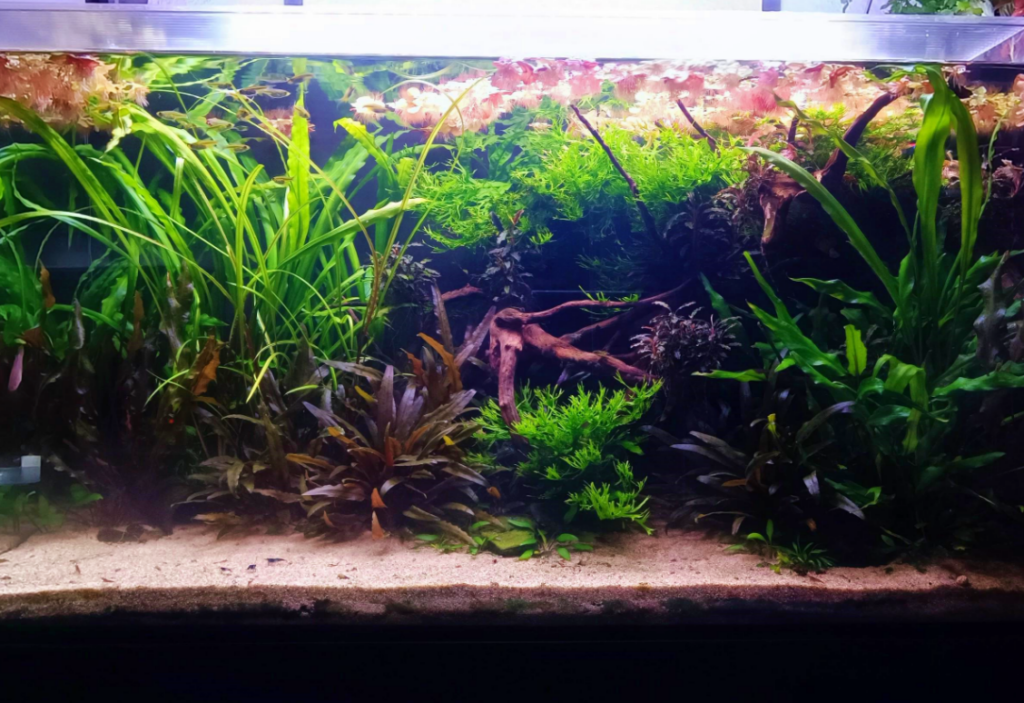
Let me show you the best plants you can grow in an aquarium with sand.
9 Aquarium plants to cultivate in a sand substrate
I learned pretty quickly that I had done something wrong when I watched the vibrant, flourishing plants in my aquarium start to wither and wilt before my eyes.
I guess I learned the hard way that my sandy substrate wasn’t the best medium for the roots of the plant species I picked back then. To avoid this in the future, I started doing extensive research on the subject.
Here are 9 aquarium plants that you can grow in sand successfully:
1. Dwarf ambulia – Limnophila sessiliflora
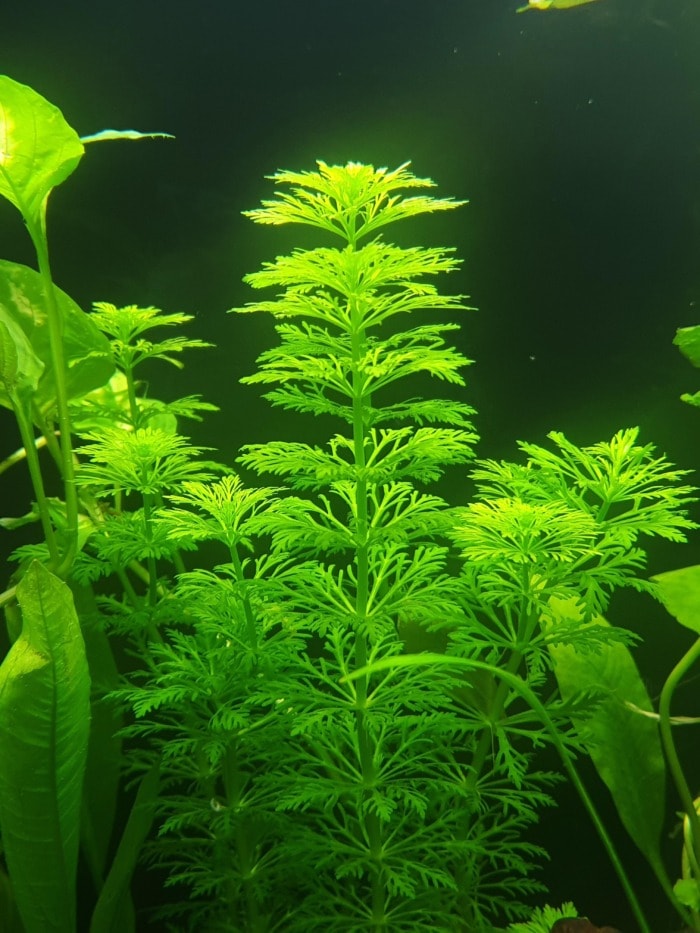
- Suitable for beginners: Yes
- Are fertilizers necessary: Yes
- Growth rate: Fast
Limnophila sessiliflora is vibrant green and bushy in appearance, and it’s often recommended to be in the background of the tank due to its larger size.
This Southeast Asian plant, also known as Dwarf Ambulia, is incredibly fast-growing and it has been shown to grow up to 1/2 inches (1.27 cm) a day.
Dwarf Ambulias are beginner friendly because they don’t require any care out of the ordinary.
However, they will need to be trimmed to prevent them from branching out too much.
Limnophila sessiliflora grow well on a sandy substrate, but they need to be planted deep enough for the roots to anchor.
Also, this plant draws most of its nutrients from the surrounding water, so liquid fertilizer is highly recommended.
2. Water Wisteria – Hygrophilia difformis
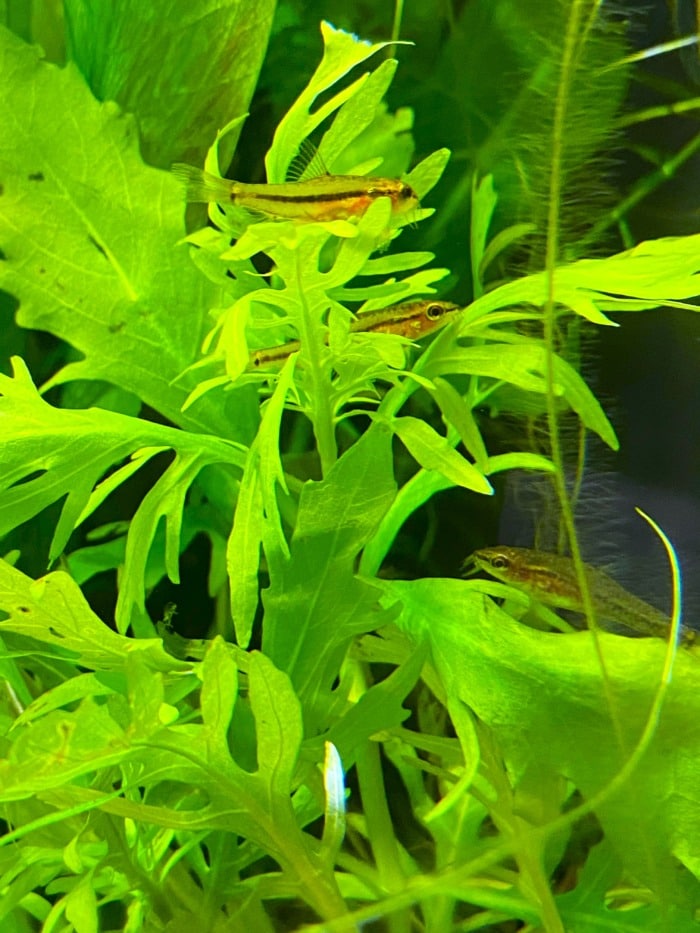
- Suitable for beginners: Yes
- Are fertilizers necessary: No but they do help
- Growth rate: Fast
Water Wisteria is an aquatic plant from Hygrophila genus known as swampweeds.
It is a lush plant that is easy to maintain and beautiful to look at.
If you’re searching for one of the best plants to include in your tank as a beginner, this one is a great option.
That’s because Water Wisteria is easy to care for:
- it is not picky about lighting.
- only needs to be pruned occasionally for maintenance.
Water Wisteria is one of few plants that actually like sand.
Ideally, its the substrate should be coarsely textured without very fine pieces that could potentially restrict the roots from growing.
However, in my experience the plant does well in pretty much all sandy substrates used in the aquarium hobby, so don’t overthink it.
It is said that this aquatic plant does not absorb through its roots, so a liquid fertilizer is the preferred method when it comes to providing necessary nutrients. Here’s my general guide on aquarium fertilizers for you to skim through if you’re not familiar with the concept.
Author’s note: Water Wisteria grows big and wide, so make sure to plant it with enough space to not cause overcrowding and resource competition.
Curious if Black Diamond sand is safe for aquariums? Check out this detailed guide.
3. Cardamine lyrata
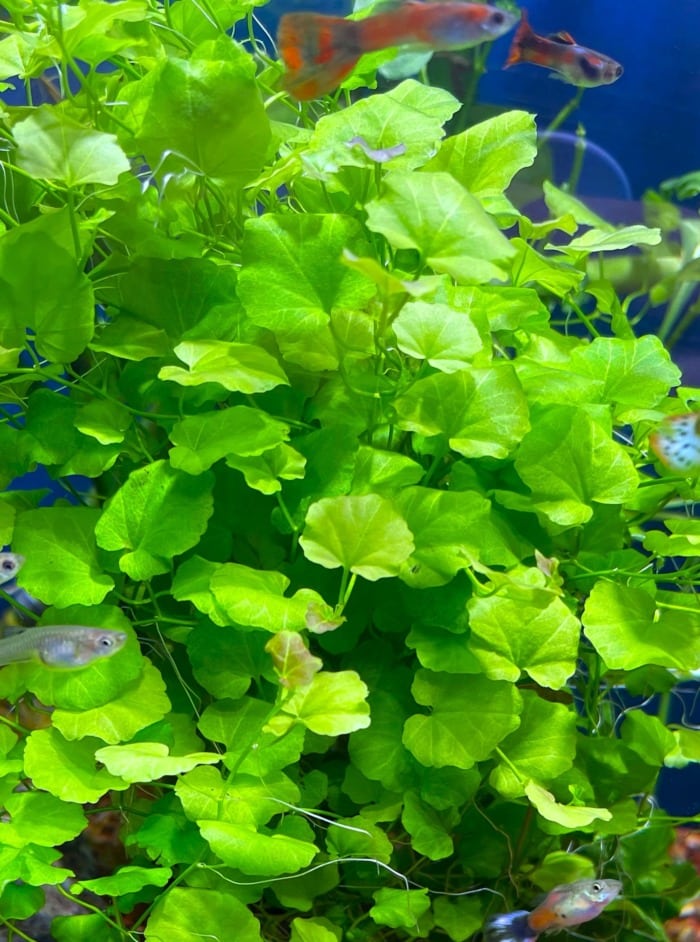
- Suitable for beginners: Yes
- Are fertilizers necessary: Yes and no, they are not necessary but including it will yield better results
- Growth rate: Fast
If you want a hardy and versatile plant that is not only fun to look at but has a purpose within your tank as well, the Cardamine Lyrata might be the perfect plant for you. These round little freshwater plants are unique in appearance and can also serve as a tasty snack for smaller aquatic residents.
Cardamine Lyrata is so independent that it doesn’t need a fertilizer to grow, but including one will yield much better results and produce a healthier plant.
I personally prefer to plant this species in groups in the substrate because the roots will do the rest and anchor to the bottom.
Fun fact: This aquatic plant can do well in freshwater or saltwater, and it prefers cooler temperatures when looked after in freshwater aquariums. So if you’re keeping an unheated fish tank setup this may be the plant for you.
4. Hygrophila corymbosa
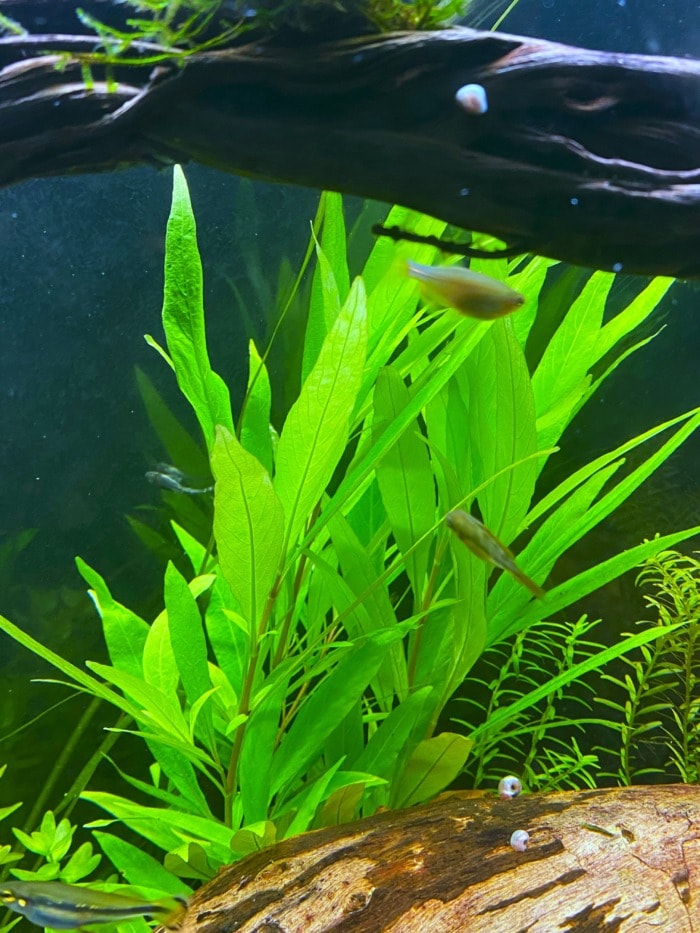
- Suitable for beginners: Yes
- Are fertilizers necessary: No but they help
- Growth rate: Yes
Hygrophila corymbosa, also known as starhorn, temple plant, and giant hygro, is a plant of many names.
Although it is easy to maintain and beginner friendly, this aquatic plant needs fairly regular supplementation with liquid fertilizer in the water to keep it healthy and thriving.
Hygrophila corymbosa is fast-growing and native to Southeast Asia, plus it has been known to develop flowers and change colors depending on its environment.
To better meet the needs of its natural habitat, provide them with a finer sandy substrate and medium lighting for optimal results.
Just remember to plant them deep in the sand to prevent floating away and allow proper rooting to occur.
5. Amazon swords – Echinodorus grisebachii
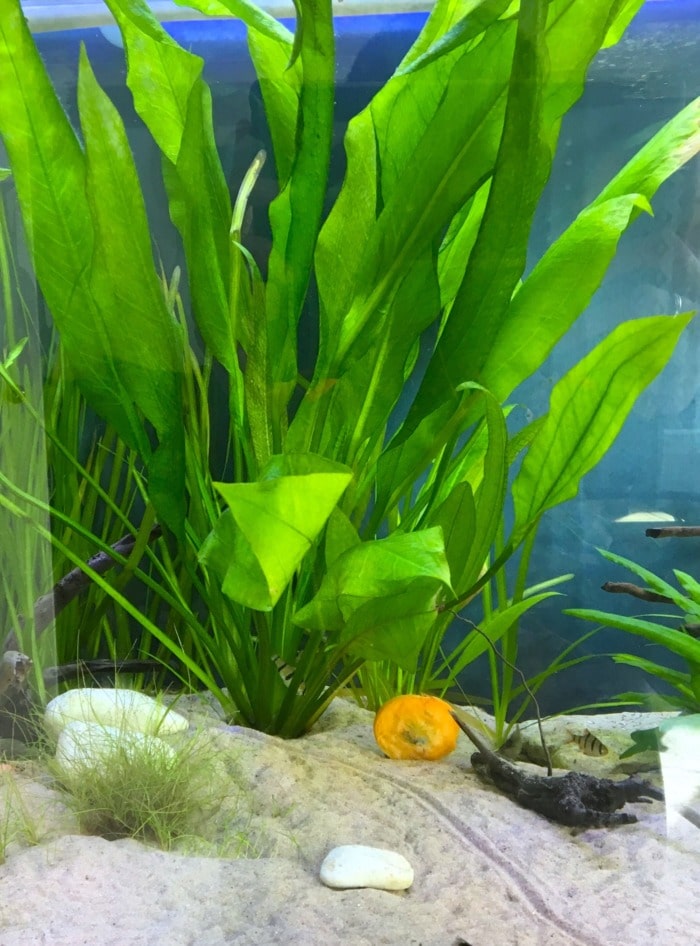
- Suitable for beginners: Yes
- Are fertilizers necessary: Yes, preferably root tabs
- Growth rate: Slow
Along with having a cool-sounding name and vibrant green leaves, this slower-growing plant is easy to care for, popular, and will make a wonderful background addition to your aquascape.
Although Amazon Swords don’t need to be planted deep within the substrate, they do require a lot of nutrients to be healthy.
They need at least some root fertilizer to thrive.
Root fertilizer is typically planted within the sand, right beneath or nearby the plant’s roots.
This helps aquatic plants that feed with their roots (such as the Amazon Swords) to extract nutrients from inert substrates such as sand.
A lack of proper nutrients and vitamins will cause the leaves of the Amazon Sword to turn brown, so make sure to keep an eye on this issue. Keep in mind if you are planting Amazon Swords with other plants that they require fixtures with bright lighting, so choose plants that can tolerate this need as well.
Want cleaner aquarium sand? Explore how sand-sifting gobies keep your substrate tidy in this guide.
6. Banana plant – Nymphoides Aquatica
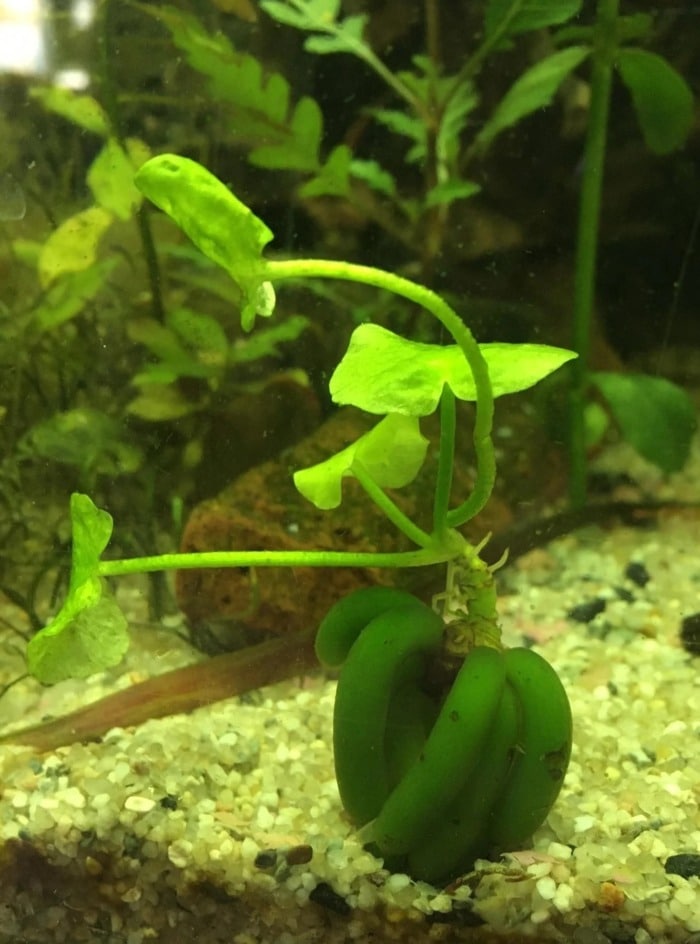
- Suitable for beginners: Yes
- Are fertilizers necessary: Yes
- Growth rate: Medium
The Banana Plant is accurately named.
This plant is so fun to look at and relatively easy to care for, honestly making it one of my favorite plants on this list.
As its name implies, the Banana plant grows stems that resemble a small bushel of bananas that serve to store much-needed nutrients. They are not picky when it comes to the type of substrate they are planted in, so they can grow well in sand as long as the banana-shaped stems remain above the substrate.
If you mistakenly bury the stems they begin to rot.
Liquid fertilizer combined with root tabs is an optimal choice to keep the plant healthy and well taken care of.
Banana plants can thrive in a wide range of lighting requirements, but they, like most live plants, will grow faster with higher light exposure.
7. Vallisneria spp.
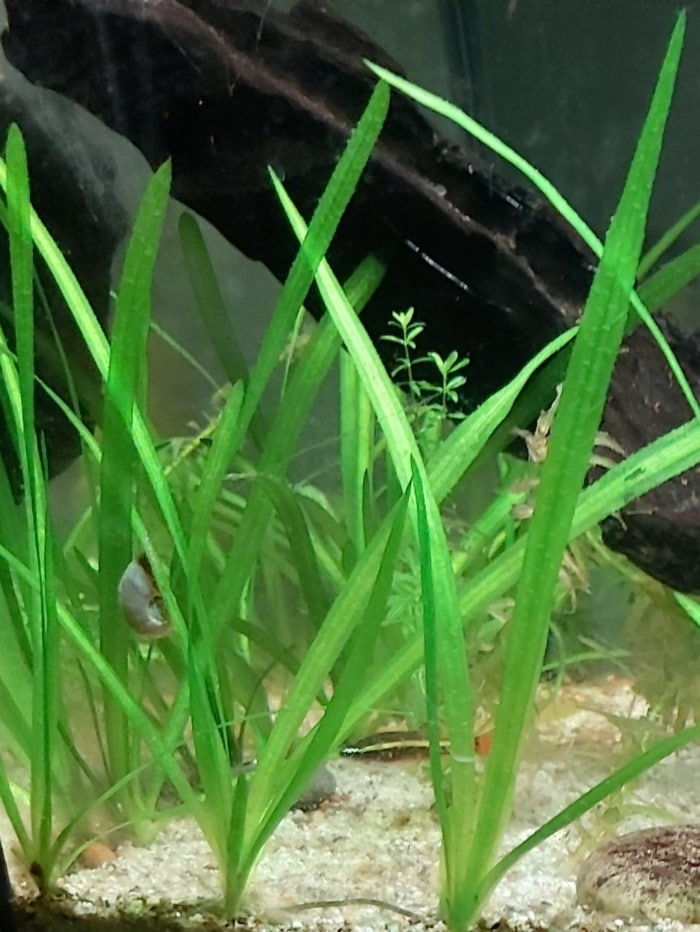
- Suitable for beginners: Yes
- Are fertilizers necessary: Yes, root tabs
- Growth rate: Slow
Vallisneria is a very hardy plant that can handle an array of temperatures, substrates, and lighting requirements.
You also won’t have to worry about them overtaking your aquarium due to their slow-growing nature.
Their flexible needs make them suitable plants for beginners, but they will still need a root tab to provide the proper nutrients needed to maintain them in a sandy substrate. Not only are they easy to care for, but Vallisneria is also fairly common around the world, so they won’t be super expensive or hard to find, even online.
8. Bacopa caroliniana
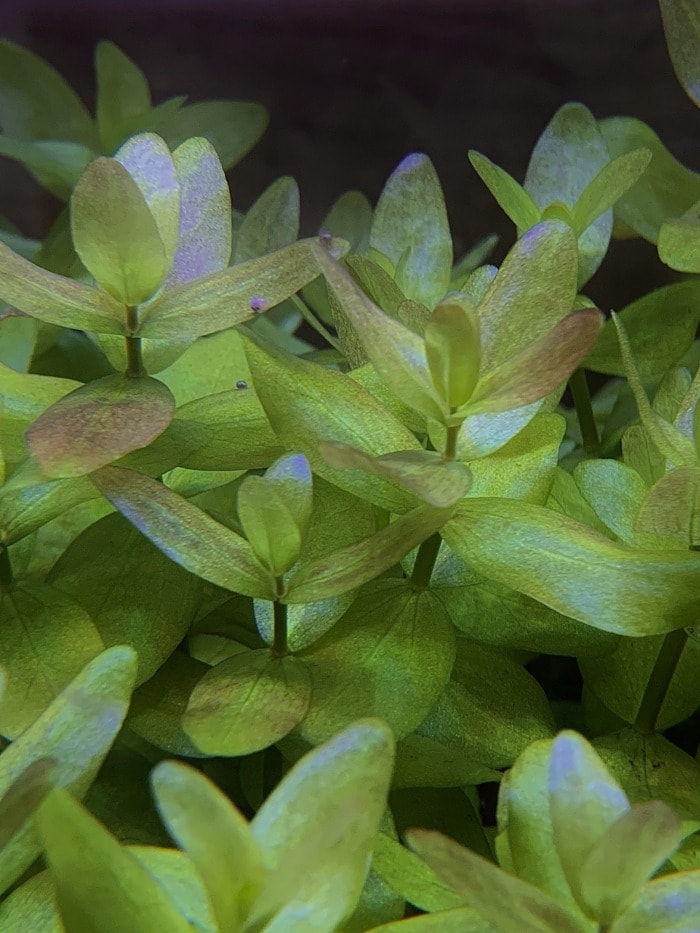
- Suitable for beginners: Yes
- Are fertilizers necessary: No
- Growth rate: Fast
Bacopa caroliniana is another hardy plant that can be found in places like wetlands, marshes, ponds, and lakes and has been known to thrive in figuratively any condition within a fish tank.
While these plants can grow well in sand and other forms of substrate, they do best when a liquid fertilizer is added to the water.
The liquid fertilizers will help provide more nutrients to your Bacopa caroliniana when needed, but it’s not necessary.
This plant grows very fast, so try to keep up with trimming it to prevent it from taking over the entirety of your planted tank.
One thing to keep an eye on is if other plants are blocking the light, which can lead to wilting, browning, and even death.
9. Red or Green Myrio – Myriophyllum heterophyllum or M. pinnatum
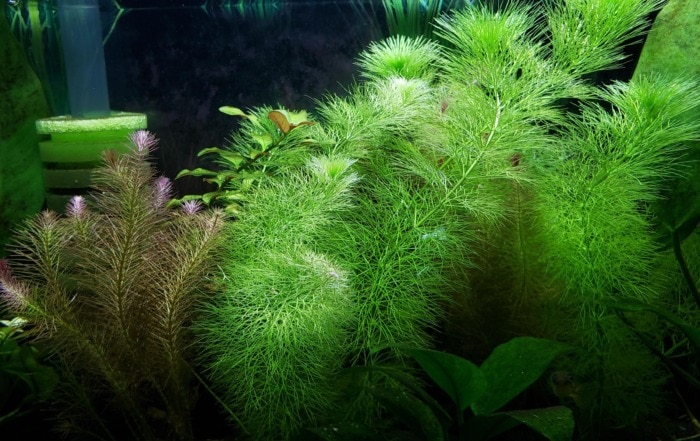
- Suitable for beginners: Yes
- Are fertilizers necessary: No
- Growth rate: Fast
The fluffy-looking Myrio plant is native to Southern North America and Central America.
Although it may look fragile this plant can hold its own in an aquarium.
The Myrio is another fast-growing plant that, technically, does not need fertilizer additions to help them grow.
In general, Myrio will do fine in the sand, but fertilizer can be helpful to keep up with needed nutrients in relation to the size of your plant.
Suggested read: More red plant ideas for the aquarium!
10. “Rhizome” plants such as Java Fern and Java Moss
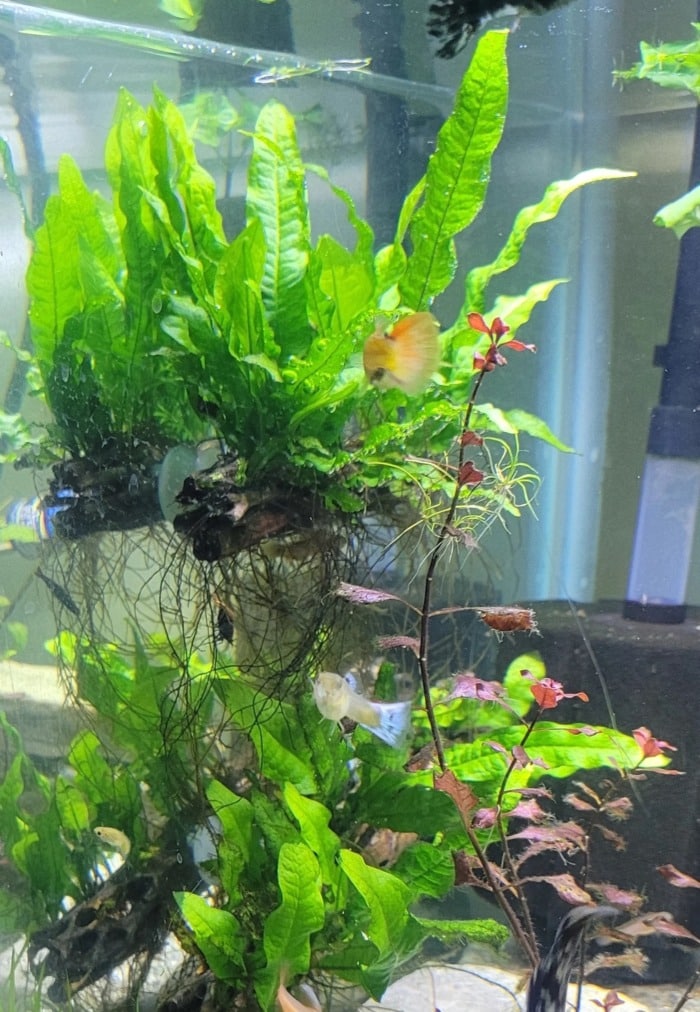
- Suitable for beginners: Yes, you have to deliberately try to kill these plants and they may still survive
- Are fertilizers necessary: No
- Growth rate: Slow
Although I only mentioned 9 plants for this list, I wanted to include a bonus entry of what’s known as “rhizome” plants to better help you find the perfect options for your planted tank.
Rhizome plants are plants with roots that have adapted to anchor onto other objects such as logs and rocks while absorbing nutrients through their leaves. A few examples of rhizomes include Java moss (Vesicularia dubyana), Java fern (Microsorum pteropus), Anubias, and a few other plants.
If trimmed and maintained correctly, you can, for example, create a carpet out of Java moss that will grow beautifully along the bottom of the tank.
In a nutshell, Java Moss carpet over sand requires some net and basic aquascaping knowledge but here’s a way to do that:
Anyway, despite what it may look like, these plants do not need fertilizer, but if you don’t see them growing as they should, a liquid supplement may be a good idea.
They are easy to maintain and they need lower to medium light settings.
Author’s note: Do not bury the rhizome in the sand. The plant will begin to rot and may die if you do. It’s particularly this trait that makes rhizome plants ideal for a planted aquarium with a sand substrate. You can also attach any of these plants to rocks and other decors by using cyanoacrylate-based super glue.
What type of sand is best for aquatic plants?
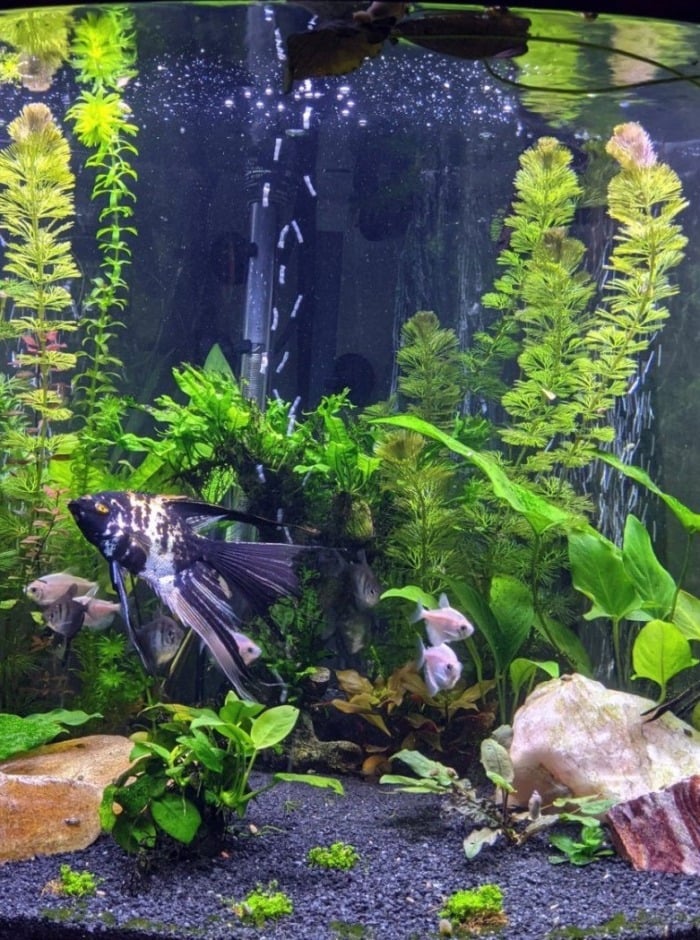
There are a couple of types of sand that you can use to grow aquatic plants in, but some are better than others.
Black Diamond Blasting Sand is a really good option for a planted aquarium. You should just make sure to use medium or coarse grit (20/40 and larger).
Click the link I left to read more on that type of sand substrate.
Pool filter sand is also a good option due to being easier to clean.
An ideal setup would consist of a layer of aquarium soil “capped” with a layer of sand. Visit this link to learn more about planted tank substrates.
Also, remember that gravel also remains an option.
When comparing gravel to sand, it depends on the preferences of the tank owner, but each has its own benefits.
Gravel allows more water flow since it’s heavy and stays on the bottom. This is useful for plants and fish that like a higher water current.
However, sand is easier to plant in and is friendly to bottom-dwelling fish.
Tweezers will help with planting in the sand!
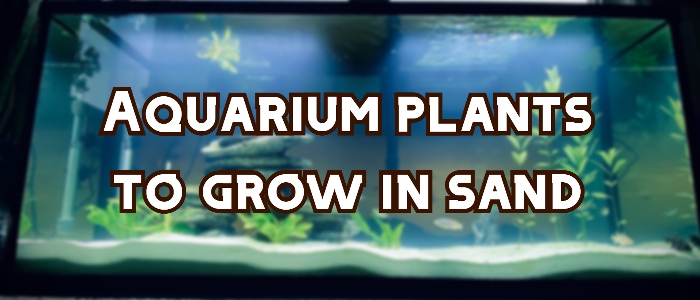
It really depends on the needs of the plant, but a rule of thumb in aquascaping is that the sand layer should generally be about 3 inches deep.
Using your hands is always an option, but using a tool called tweezers just helps for more accurate and deeper planting. If you have to plant something fragile like dwarf hairgrass in coarse aquarium sand the tweezers are basically a must.

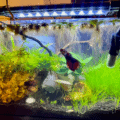
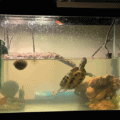
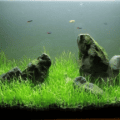
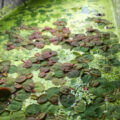
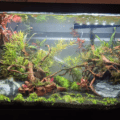
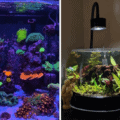
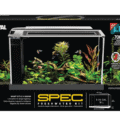
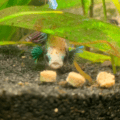
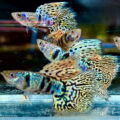
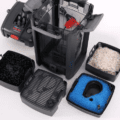
I am switching over from an existing planted tank with a sand substrate to a 40 gallon breeder tank where I want to have a mix of sand in the foreground and planted in each back corner using an aqua soil. I am concerned of the aquasoil adding ammonia or nitrates to the tank since I am transferring over the fish as well.
In this scenerio, what would be the best way to go? It almost sounds like I should forego any aqua soil and go with an inert soil that is dosed with root tabs.
What do you suggest?